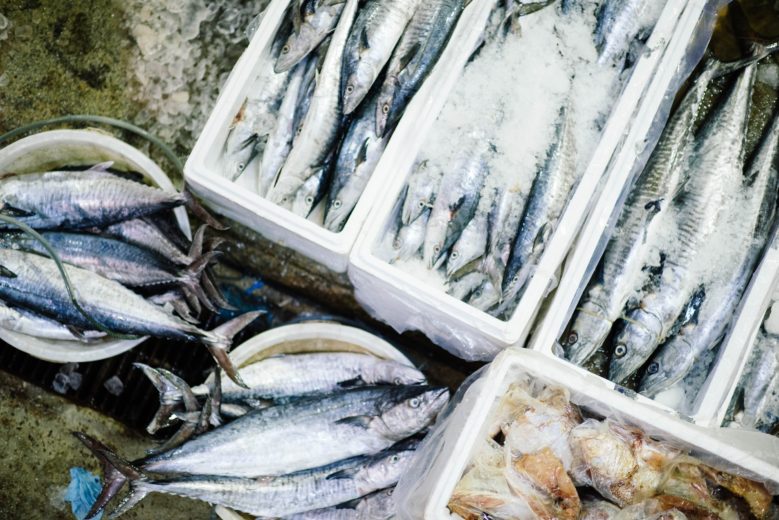
Sustainable Seafood Myths and Misconceptions Part 2
We are reader-supported. When you buy through links on our site, we may earn affiliate commission.
There are all sorts of myths and misconceptions about sustainable seafood, as we looked at in the first part of this article. The disinformation is particularly frustrating because so many people are interested in eating fish! Fish is a healthier option than meats higher in fats, such as beef and pork. It harmonizes well with vegetables, which health-conscious consumers are continuing to add to their diets. Sustainable seafood farms are an increasingly visible means of ensuring fish aren’t caught to the point of extinction. More than 30 percent of fisheries are currently overexploited, meaning the catch causes a decline in the population that isn’t replenished.
Sustainability, as applied to seafood, means catching fish in a way that doesn’t contribute to the decimation of the marine population. In the most basic way, sustainability means that, for every salmon someone eats, another one is being raised. And the same is true of tilapia, shrimp, sardines and so on. One way to ensure sustainability is through farms, or aquaculture. Well, myth-busting is an honorable profession. So let’s apply it to the myths of sustainable seafood.
Fish Farming Causes Environmental Degradation and Unhealthy Fish
As we discussed before, sustainable seafood can be more harmful to the environment and raise unhealthy fish. The truth is, however, fish farming varies in environmental responsibility, just like land farming does. Some farms conduct responsible, ethical aquaculture. In contrast, some farms care more about maximizing profit, and their employees have less training and supervision. The good news is that the industry is very aware of the challenges in fish farming. With a little bit more progress, we can ensure everyone is following the leading practices today.
Some countries, like Iceland, have perfected a method of fish farming that relies on recirculated water, so the fish are swimming and eliminating in the same relatively small amount of water. This technique cuts down on disease and environmental threat. Some scientists are developing methods of farming fish in large tanks, on land. This will eliminate any threat of water pollution or species threat. If the tanks use recirculated water, the fish can remain healthy. The answer? Be responsible when shopping for fish. Know which farms practice ethical, genuinely sustainable and environmentally healthy methods.
The Most Sustainable Seafood Is in Specialty Stores
People interested in environmentally sound purchasing practices should know the best places to purchase sustainable fish. Is it at a fishmonger’s, a specialty store or near the ocean that participates in overfishing? A farmers’ market that includes seafood? Not necessarily. Startlingly enough, some of the largest food retailers in the U.S. have the best record in supplying sustainable seafood: Target, Safeway, Wegman’s and Whole Foods. Many Americans are close to at least one of these retailers. Sustainable seafood is no further than a drive away.
The Catch Has to Be Fresh to Be Sustainable
This myth is not true at all. Food mavens who follow trends on sustainable seafood point out frozen seafood is just as sustainable as the stuff at the fish counter. It fact, frozen seafood may have a greater proportion of sustainably caught fish. Remember, many large retailers are leading the seafood sustainability parade. Plus, even chefs believe that frozen fish is just as good as the catch of the day, and equally healthy. The same is true of some canned seafood. Again, the answer is to be informed. Canned seafood is just as sustainable as the most sustainable fish. Yes, some canned fish has been subject to health scandals in the past, like mercury contamination. For tilapia, salmon, trout and tuna, that’s all in the past.
Sustainable Seafood Is More Expensive
This myth is also resoundingly busted. Sustainability, after all, just means the fish are being raised with the idea of being used by humans, ultimately, and with being replenished. It doesn’t necessarily mean that the type is exotic and therefore expensive. Some sustainable seafood can be expensive. Ninety percent of shrimp in the United States, for example, is raised in farms. But its expense is related to its being shrimp, not the sustainability. Catfish is also largely farm-raised and is less expensive than shrimp. The key for consumers is to shop for cheaper varieties of seafood that are sustainable.
Around the world, our oceans and rivers have been widely fished, leading to fears of overfishing. While many people want to eat seafood because of its health benefits, they also want it to be sustainably raised to avoid the extinction of seafood. Yet myths and misconceptions about sustainable seafood abound. While there are some environmental and health concerns with fish farming, best practices also exist. Consumers need to be informed about what companies follow the best practices and purchase their products. Look for these products at mainstream retailers, and in frozen and canned varieties.
Share on
Like what you read? Join other Environment.co readers!
Get the latest updates on our planet by subscribing to the Environment.co newsletter!
About the author
Jane Marsh
Starting from an early age, Jane Marsh loved all animals and became a budding environmentalist. Now, Jane works as the Editor-in-Chief of Environment.co where she covers topics related to climate policy, renewable energy, the food industry, and more.





